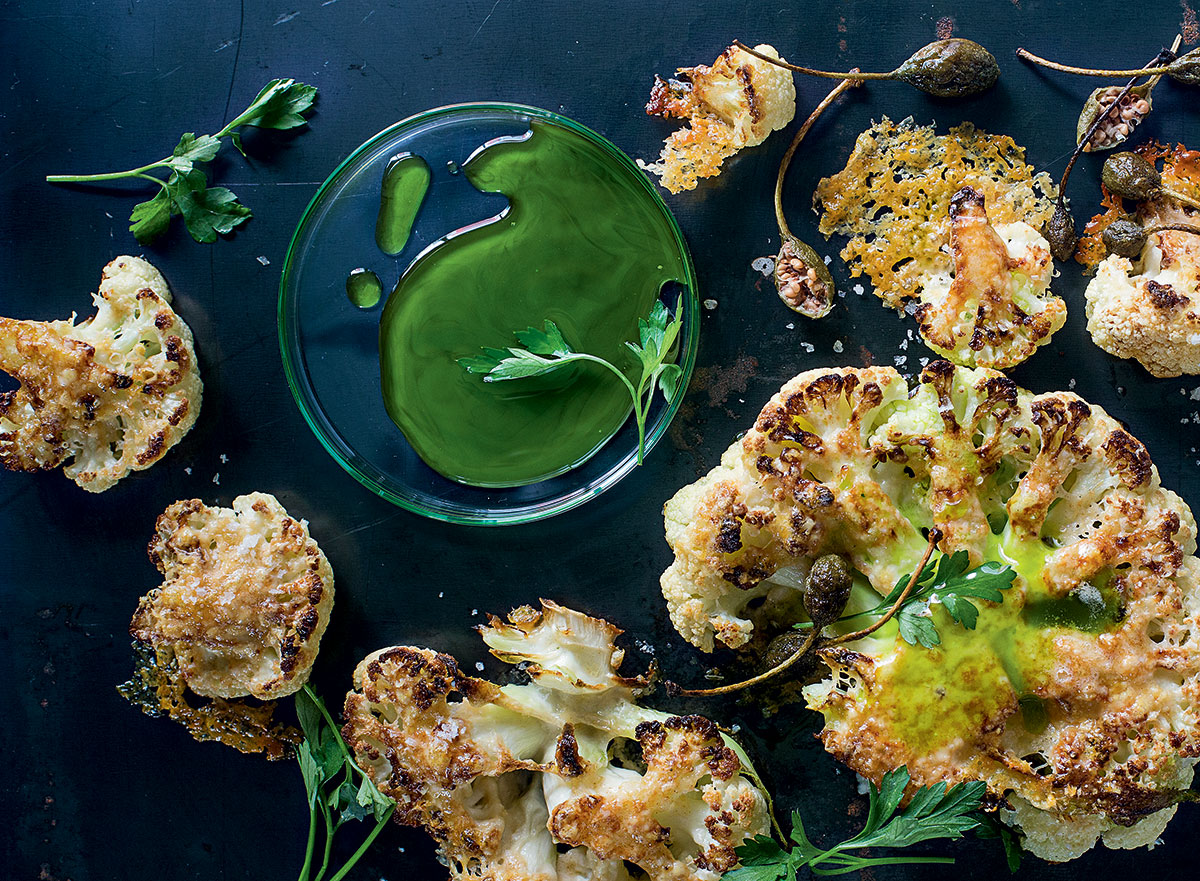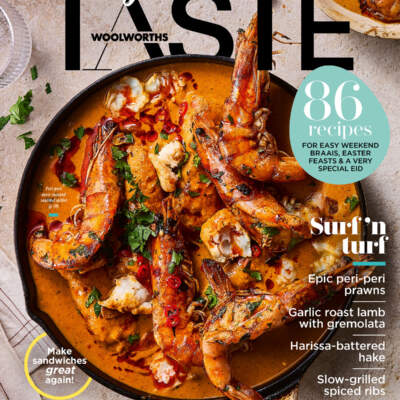Oil or nothing: Alternative oils and how to use them
There’s a lot to be said for your trusty bottle of olive oil, but there’s a world of alternative oils out there, which have a range of flavour and cooking benefits. From almond to grapeseed and sesame, you’ll strike gold when you try them.
COLD- VERSUS HEAT-PRESSED OILS
From olive to sesame oil, the way an oil is extracted affects its quality. Using heat to extract the oil produces more of it, but also reduces flavour and aroma. Cold-pressing produces less oil that’s stronger in flavour and aroma with more nutrients.
Stock up on a range of oils for their different flavours and benefits. Here’s the lowdown on what to add to your pantry (store them in a cool, dark place – not on the shelf above your stove – to prolong shelf life).
ALMOND OIL
Is a light oil with a delicate flavour best used as a finishing oil and in dressings. It adds mild nuttiness to cakes and muffins – simply replace around 1⁄4 cup of the vegetable oil or butter normally called for.
Try: Roast cauliflower with parsley oil.
AVOCADO OIL
(And new butter- flavoured avo oil) is a buttery oil high in monounsaturated fats with one of the highest smoking points of any plant oil. It’s super versatile and can be used for everything from grilling to dressings, or as a finishing oil.
Try: Turmeric-and-coconut broth.
COCONUT OIL
Is made by pressing the fat from the white coconut flesh. It’s considered high in saturated fat and
has a long shelf life. Use it in moderation for baking, frying and as an alternative to butter or vegetable oil.
Try: Coconut seafood and Asian greens stir-fry.
GRAPESEED OIL
Has a neutral flavour, making it a great stand- by when you don’t want to taste the oil in a recipe. It’s high in polyunsaturated fats and emulsifies well, making it perfect for mayo and creamy dressings.
Try: Camilla’s Asian curry.
OLIVE OIL
In its extra virgin form is an important part of the Mediterranean diet, generally considered one of the healthiest ways to eat. It’s high in monounsaturated fats. A good unrefined extra virgin olive oil will be slightly fruity, slightly bitter and slightly pungent.
Try: Olive oil-and-pistachio cake with pear crust
SESAME OIL
Is one of the most fragrant and intensely flavoured oils available and has a distinctive sweet nuttiness. Best used for sprinkling sparingly over food, especially in southeast Asian and Indian cooking, just before serving.
Try: Orange-sesame duck and butternut noodles
MAKE YOUR OWN INFUSIONS

Home-made flavoured oils are an easy way to add flavour to pasta dishes, or to use as a base for vinaigrettes or as dips for crusty bread. Infused oils should be stored in a cool, dark place or refrigerated and have a short shelf life–preferably use within 10 days.
CHOOSE A BASE OIL
A buttery olive oil with a slightly sweet flavour is a good bet – avoid very grassy or herby flavours that could clash with the ingredients you’re using to infuse the oil.
INFUSE AWAY
Chop or bruise your ingredients to release the oils. Around 1⁄4 cup fresh, delicately flavoured herbs – such as parsley – per cup of oil is a starting point, but you’ll need a smaller amount of strongly flavoured ingredients like fresh chilli, according to your taste (start with less and add more if you prefer). Add them to the oil and mix thoroughly, then strain and pour into a bottle and seal well. The tiny particles left behind will in the oil continue adding flavour.
TURN ON THE HEAT
If you’ve chosen hardier ingredients like rosemary sprigs or dried chilli pieces, it’s best
to heat the oil to a moderate temperature. Remove the warm oil from the heat, add your ingredient and let it steep, covered, until the oil has cooled, before bottling.
TRY THESE FLAVOUR COMBOS
Fresh chilli and coriander; thyme and lemon zest; rosemary and fresh garlic; fresh chilli and orange zest.
WHERE THERE’S SMOKE ...
All fats, from butter to olive oil, have a smoking point. The temperature at which they start to produce smoke is also when they start to break down. Oils can turn bitter and your food can burn. The smoking point of olive oil is relatively low – 160°C for extra virgin and 215°C for virgin – while avocado oil has a high smoking point at 271°C.



Comments